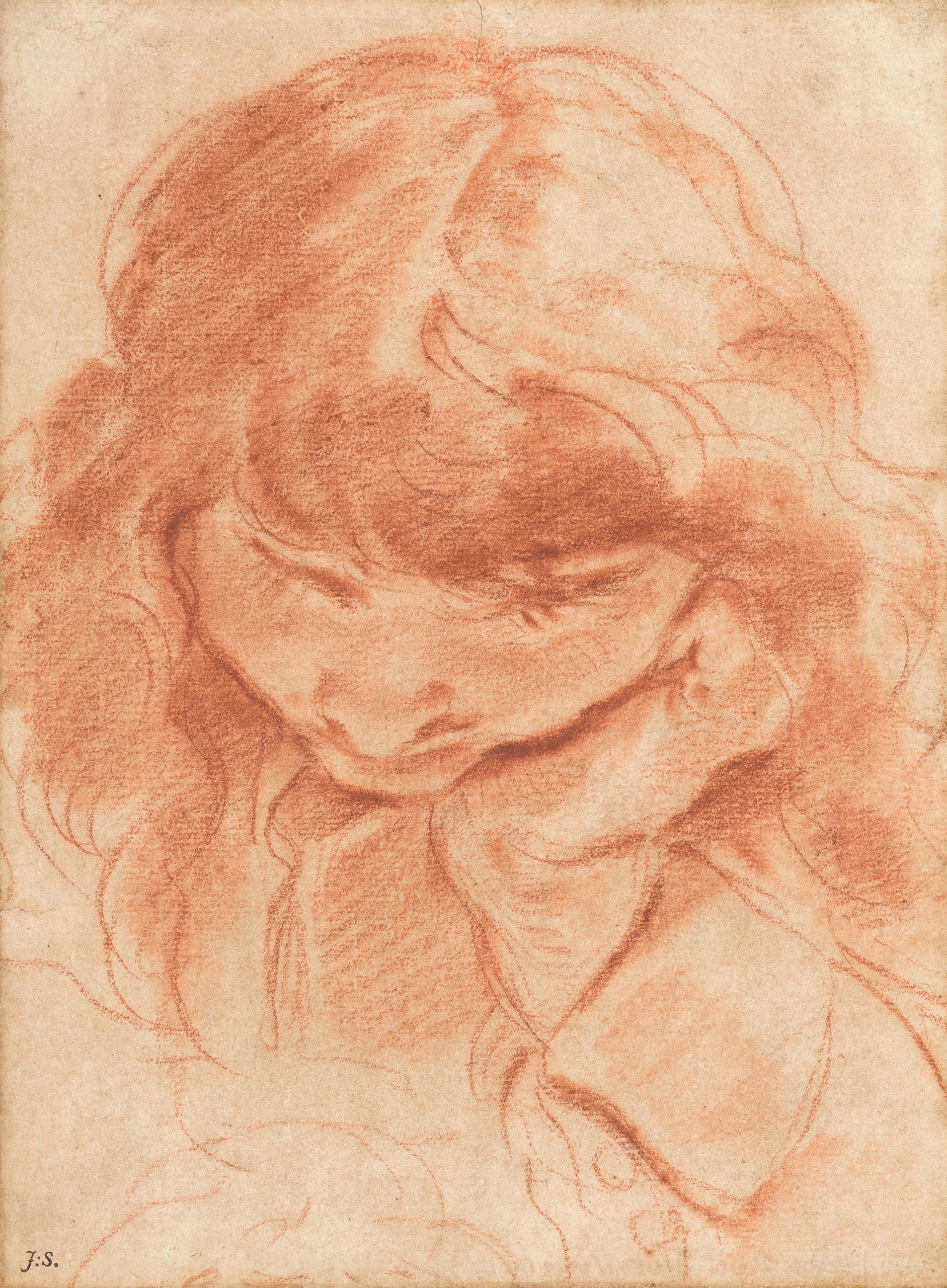
Canuti
Domenico Maria
Bologna 1625 — 1684
Head of a Boy Leaning on his Hand (recto);
A Study of a Man Seen from Behind (verso)
Red chalk and stumping.
Inscribed Gio. Francesci Barbieri detto Il Guercino da Cento on the verso.
293 x 217 mm (11 1⁄2 x 8 9⁄16 in.)
Provenance
J. Skippe (1742 – 1811; Lugt 1529a); by descent to Mrs A. C. Rayner-Wood; E. Holland Martin; Christie’s London 20 November 1958, lot 95, plate 15 (as Domenico Fetti); private collection.
Exhibition of Seventeenth Century Art in Europe, London, Royal Academy, 3 January 1938 – 12 March 1938, p. 157, n° 439, as Domenico Fetti, lent by Mrs Rayner-Wood.
This brilliant study of a young man with his head resting on his hand, as if asleep, reading, or just daydreaming, belongs to the Bolognese tradition of drawing the everyday life, a new approach introduced by the Carracci at the end of the 16th century. Founding a naturalist revolution in Bologna, this new relationship to drawing and nature was adopted by the Carracci’s pupils and followers, including Guido Reni, one of Domenico Maria Canuti’s masters. From the very start of his training, Canuti became familiar with this way of drawing the world and its everyday details, in order to produce a more credible art, closer to people and reality.
After a brief training with Giovanni Andrea Sirani, Canuti moved to Rome, where he met Francesco Albani and Giovanni Lanfranco, and where he remained until at least the end of 1651. After returning to Bologna, he spent some time in Mantua, where he painted a series of six canvases on the life of Saint Bernardo Tolomeoi in the church of San Benedetto Novello. He quickly became a brilliant painter of decorative frescoes and his mastery of anatomical drawing enabled him to execute with ease the bold foreshortenings and figures seen da sotto in su that populate his ceilings, such as the frescoes in the sala of Palazzo Pepoli, in Palazzo Calzolari with the Triumph of Bacchus and Ariadne, or in the library of San Michele in Bosco, among others.
The former attribution of this sheet to Domenico Fetti is not incomprehensible. On the one hand, many of the drawings in the Skippe collection were reputed to have been bought in Venice, and were therefore attributed to Venetian artists, sometimes erroneously. On the other, the motif of a face leaning on a hand appears several times and in several forms in Fetti’s paintings. But his drawings are rare, and there is nothing in the group of those firmly attributed to him to allow a conclusive comparison with this sheet.
It was Nicholas Turner who first attributed this sheet to its author, Canuti, by discovering its verso and comparing it to Canuti’s male anatomies, such as that of the Study of a Seated Nude Man in the Gere collection1. The male anatomy quickly studied is indeed characteristic of Canuti, with its swollen forms and outré posture that also show the influence of Rubens. It could be preparatory to one of the ignudi painted around The Apotheosis of Hercules on the ceiling of the salon in Palazzo Pepoli in Bologna in 1669-1670. Canuti studied two possible positions for the head, one bent forward, the other turned to the right.
As for the recto, there are few truly comparable sheets in terms of subject matter, but the graphic style is clearly recognizable: soft red chalk, a fine mastery of stumping, the contours strengthened and doubled with stumping in some places. The young man’s physiognomy can be found in certain figures in Canuti’s paintings, such as the young boy in the foreground of the Martyrdom of Santa Cristina in Bologna, Chiesa di Santa Cristina. A study of a man wearing a turban preserved at Schloss Fachsenfeld can be compared to ours, and is linked to a Portrait of a Man in a Turban (private collection) dated around 1672 by Simonetta Stagni in her monograph on the artist. However, our sheet has more charm and its poetry is timeless.
- Italian drawings of the 17th century in English private collections, Edinburgh, 1972, n° 17, pl. 57

